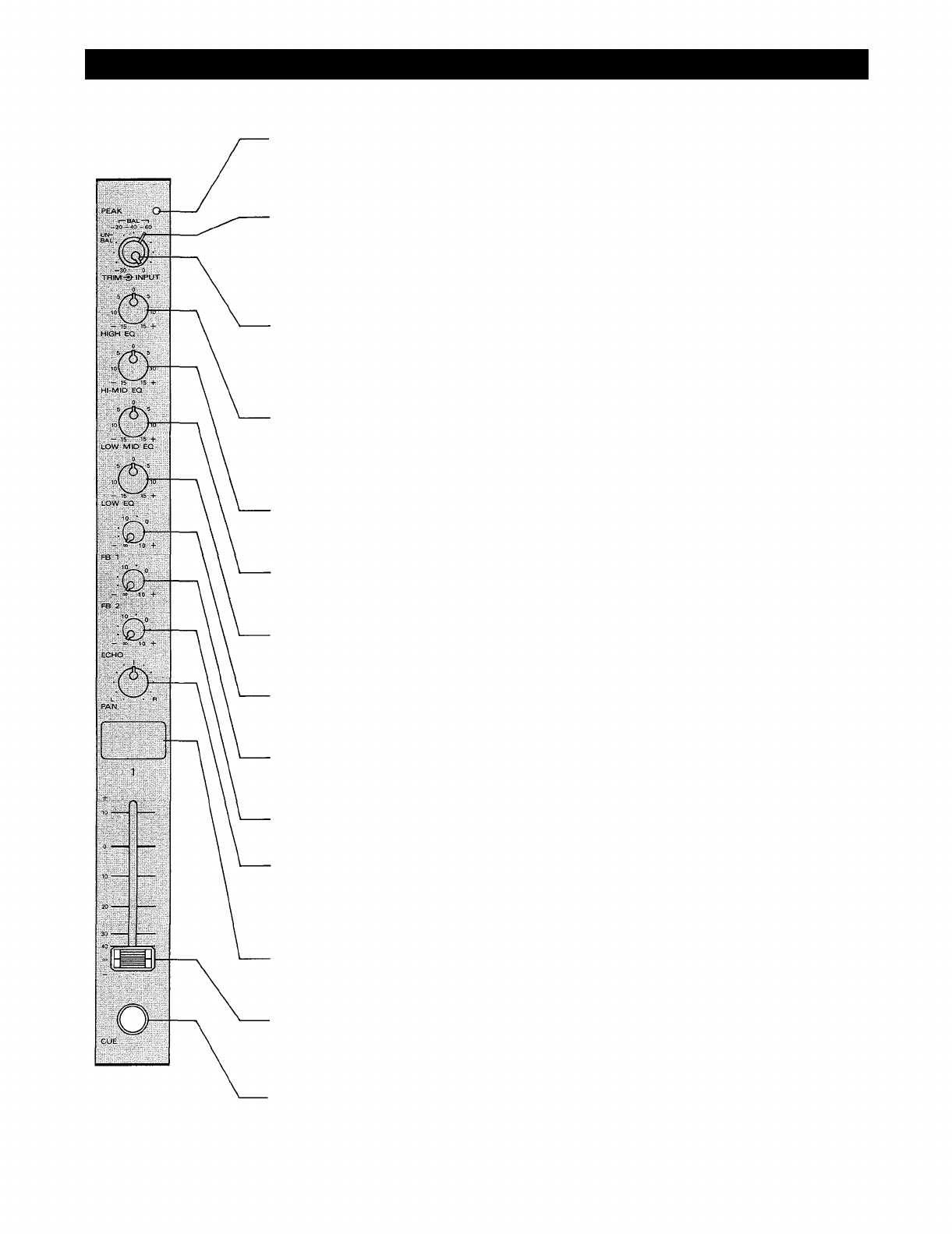
Front Panel, Input Section
Peak Indicator
The peak indicator lights if clipping occurs in the pre-amp stage of the corresponding input
channel. When the light comes on, an adjustment must be made with the Input Level Selector
Switch and/or the Input Trim control.
Input Level Selector Switch (INPUT)
Selection is made in accordance with the output of the microphone or other equipment
connected to each input channel (XLR connector and phone jack). (—20, —40 and —60) dB
indicates the input sensitivity of the XLR connector input when the trim control is set at the "0"
position. The "UN-BAL" position permits using the phone jack input. The unbalanced input
sensitivity is —30dB when the trim control is set at the "0" position.
Input Trim Control (TRIM)
The input trim varies the gain of the pre-amplifier stage of each input channel, providing a
continuously variable control of gain in the range of 0 to —30dB from the input level switch
position. For instance, with the input level selector switch set at —60dB, the variable range is
between -60dB and -30dB.
High Equalizer Control (HIGH EQ)
The high control in each input channel alters the frequency response of the channel input,
allowing a variety of high frequency characteristics. The high control provides ±15dB of
continuously variable shelving equalization at 10kHz, having flat audio response at the
detented "0" position.
High-Mid Equalizer Control (HI-MID EQ)
The high-mid control provides ±15dB of continuously variable peaking equalization at 3kHz.
The detented "0" position is flat.
Low-Mid Equalizer Control (LOW MID EQ)
The low-mid control provides ±15dB of continuously variable peaking equalization at 300Hz,
having flat audio response at the detented "0" position.
Low Equalizer Control (LOW EQ)
The low control provides ±15dB of continuously variable shelving equalization at 100Hz,
having flat audio response at the detented "0" position.
Foldback Control 1 (FB 1)
The Foldback 1 control assigns the pre-equalizer, pre-fader input signal to the foldback 1
mixing bus. This control is used to route the input signal to stage monitor systems.
Foldback Control 2 (FB 2)
The Foldback 2 control assigns the pre-equalizer, pre-fader signal to the foldback 2 mixing
bus.
Echo Control (ECHO)
The echo control assigns the post-equalizer, post-fader signal to the echo bus.
Pan Pot
(PAN)
This control assigns the fader output signal of the channel to the Program L, R mixing busses.
At the center position, the pan pot routes the signal equally to the L and R mixing busses.
Panning from one side to the other gradually assigns the input signal to either the Program L or
R mixing busses exclusively.
Writing Block
The name of the input equipment or microphone setting can be written in with an eraseable
felt pen or a wax pencil.
Input Fader
The fader provides continuously variable adjustment of the channel's output to the program L
and R mixing busses, and to the echo mixing bus. The nominal level is at the "0" position, with
the fader retaining a 10dB margin.
Cue Switch (CUE)
The cue switch is for monitoring the post-EQ, pre-fader signal in each input channel through
headphones. The switch is a "push-on push-off type. When more than two switches are "on",
the signals are combined.
- 3 -


















